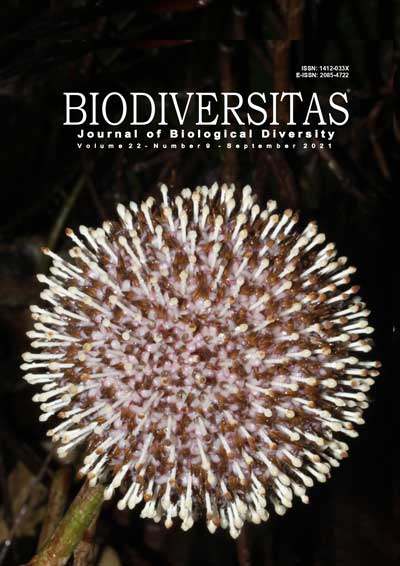Chemical composition and antioxidant activity of three species of Cornukaempferia in Thailand
##plugins.themes.bootstrap3.article.main##
Abstract
Abstract. Chumroenphat T, Saensouk S, Saensouk P. 2021. Chemical composition and antioxidant activity of three species of Cornukaempferia in Thailand. Biodiversitas 22: 4036-4044. Genus Cornukaempferia (Zingiberaceae) were used as medicinal plants in Thailand. Cornukaempferia has never been reported the chemical compounds and antioxidant activity before. This study was designed to identify the chemical composition and antioxidant activities in root, rhizome, stem, and leaves of Cornukaempferia aurantiflora, C. larsenii, and C. longipetiolata. DPPH scavenging activity and Ferric reducing antioxidant power (FRAP) assays assessed the chemical composition and antioxidant activity. The results showed that total phenolic content (TPC) and total flavonoid content (TFC) found different plant parts obtained in this study were in the order of root>rhizomes>leaves>?stems. The C. aurantiflora had a high TPC of 416.39 mg GAE/g dry weight, while individual phenolics, such as vanillic acid at 256.90 mg/g dry weight, showed high contents in the leaf part. For C. larsenii, TFC and individual flavonoids, such as catechin, have high 62.52 and 56.47 mg/100g dry weight values in the roots, respectively. The antioxidant activities in different species of different plant parts (DPPH: root>leaves?> rhizomes?>?stems; FRAP: leaves?>root>?rhizomes?>?stems). The genus Cornukaempferia is a rich source of bioactive compounds and antioxidant activity. Therefore, the genus Cornukaempferia will be used as medicine and food to produce products with health benefits in the future.
